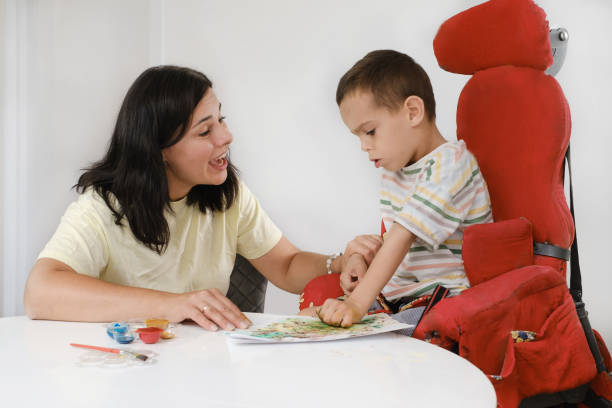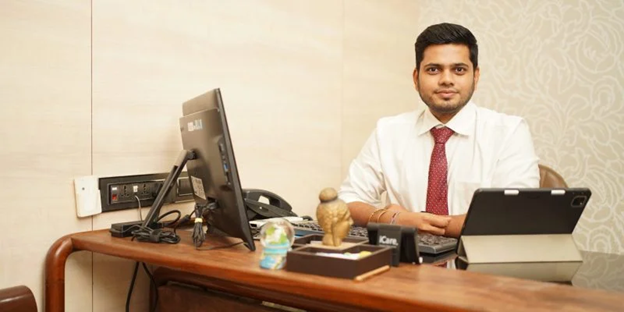Can mild autism disappear with age?

Introduction
Have you ever wondered if children diagnosed with mild autism can eventually outgrow their symptoms?
Or if consistent support can help them lead independent lives as adults?
Around the world, autism spectrum disorder (ASD) affects approximately 1 in 100 children, according to the World Health Organization. In India, studies estimate that nearly 1 in 68 children show signs of autism, highlighting the growing awareness and need for timely diagnosis.
Dr. Prakhar Jain, an acclaimed psychiatrist in Mumbai, India, shares, “Autism is not a disease to be cured but a way of experiencing the world differently. With early guidance and the right interventions, children with mild autism can achieve remarkable milestones. Growth, in many ways, is about understanding and nurturing those unique strengths.”
Curious about how autism evolves over time? Let’s uncover the truth behind developmental changes.
How Mild Autism Symptoms Evolve with Age

So, what exactly influences this improvement? Let’s explore the deeper factors shaping long-term progress.
Factors That Shape Autism Progress Over Time
Every person’s autism journey looks a little different. Several elements contribute to how symptoms may evolve:
Early Diagnosis: The sooner mild autism is recognized, the better the chances of tailoring interventions. Recognizing early signs of autism—like limited eye contact, repetitive behavior, or delayed speech—helps in timely support.
Therapeutic Consistency: Regular therapies, including occupational and speech therapy, foster steady developmental growth.
Family and Social Support: Families that maintain structure, encouragement, and acceptance play a vital role in progress.

Cognitive Stimulation: Engaging in problem-solving games, art, or structured play improves flexibility and social understanding.
Emotional Environment: A stress-free, empathetic environment helps children with autism regulate emotions better, enhancing communication and adaptability.
Dr. Prakhar Jain, an insightful neurodevelopmental psychiatrist in Mumbai, notes, “Each child’s progress depends on a blend of genetics, environment, and emotional nurturing. When these align, transformation becomes possible—not in terms of ‘curing’ autism, but in enhancing quality of life.”
Concerned about your child’s communication or social responses? Consider reaching out to a qualified professional for a developmental evaluation and guidance on next steps.
Now that we understand the key influences, how can early intervention truly make a difference? Let’s find out.
Impact of Early Intervention and Therapy on Development
Early intervention lays the foundation for lifelong growth. When initiated before the age of five, therapies like Applied Behavior Analysis (ABA), speech therapy, and occupational therapy can reshape how children interact with their surroundings. Research shows that early, consistent support can help nearly 40–50% of children with mild autism attend mainstream schools and achieve social independence.

According to Dr. Prakhar Jain, a respected psychiatrist in Mumbai, “Intervention is most effective when it’s personalized. The earlier it begins, the more neural pathways adapt. Children start responding better to stimuli, express emotions, and connect meaningfully with others—traits that support lifelong progress.”
But what happens after childhood? Let’s look at how individuals continue to thrive beyond early interventions.
Long-Term Support and Strategies for Adults with Mild Autism
Adulthood comes with its own set of hurdles — figuring out careers, building relationships, and staying independent. For people with mild autism, having some structure and practical skill training can make those transitions a lot easier. Ongoing therapy, job coaching, and mental health support help keep things balanced and manageable.

Being part of a social circle matters too. Group activities, social skills sessions, and supportive workplaces can really boost confidence and connection. Regular check-ins with a therapist or psychiatrist can also help with stress or anxiety, which many adults on the spectrum deal with from time to time.
Dr. Prakhar Jain, a well-known neuropsychiatrist in Mumbai, explains, “Autism doesn’t fade away as we grow — it changes shape. The key is lifelong guidance that builds on a person’s strengths while easing the tough parts. With the right tools and mindset, living a full, independent life isn’t just possible — it’s completely within reach.”
Knowing when to seek professional help can make all the difference—let’s see when that step becomes necessary.
When to Seek Medical & Psychiatric Help
If your child’s communication, behavior, or emotional responses seem unusual or inconsistent with developmental milestones, consulting a psychiatrist is essential. Signs that may indicate autism spectrum disorder include:
- extreme sensitivity to sound
- difficulty forming sentences
- repetitive movements
Early professional evaluation prevents unnecessary delays in therapy.
Dr. Prakhar Jain, a trusted psychiatrist in Mumbai, India, emphasizes, “Parents often sense something before anyone else. Seeking timely psychiatric guidance doesn’t label a child—it liberates them from confusion and opens the door to progress. Diagnosis is not a verdict; it’s the first step toward empowerment.”
If your child shows patterns that concern you, reach out to a professional for an assessment and structured developmental plan.
Understanding professional intervention is key—but what does Dr. Prakhar Jain’s unique approach look like in practice?
Dr. Prakhar Jain’s Approach to Treating Mild Autism
At his practice in Mumbai, Dr. Prakhar Jain integrates medical insight with empathy. His multidisciplinary approach includes behavioral therapy, parental guidance, medication (when necessary), and social skill development programs. He also collaborates with speech and occupational therapists to ensure holistic improvement.

His philosophy centers on individuality. No two children are the same, and hence, their treatment plans differ. This tailored care empowers both the child and family to build confidence and stability. Parents often find reassurance in his calm, collaborative approach that respects every child’s pace and potential.
Before we wrap up, let’s summarize what we’ve learned and why continuous awareness matters.
Conclusion
Mild autism does not disappear with age, but progress is always possible. With compassionate support, early intervention, and consistent therapy, individuals with autism can lead fulfilling, independent lives. What matters most is timely recognition and a commitment to understanding each person’s unique way of connecting with the world.
Still have questions about autism and development? Let’s clear up a few common queries below.
FAQs
- Is mild autism the same as high-functioning autism?
Not really. People often mix them up, but they’re a bit different. High-functioning autism usually means stronger language or thinking skills, while mild autism is more about small social or behavior differences.
- Can a child with mild autism lead a normal life?
Yes, absolutely. With the right support and early help, most kids learn, work, and live independently. They just need a bit of guidance along the way.
- Are boys more likely to have autism than girls?
Yeah, studies show boys are diagnosed more often. But that might be because girls often show it differently or hide it better, so they’re sometimes missed.
- How does mild autism affect learning abilities?
Every child’s different. Some are amazing at things they love, like art or numbers, but may find focus tough in other areas. The right teaching style and patience go a long way.
- Can adults with mild autism benefit from therapy?
For sure. Therapy helps at any age—especially with managing stress, social life, or work. It’s about finding tools that make life easier, not changing who you are.
Wondering whether your child’s developmental patterns align with expected milestones? Seek guidance from a mental health expert to explore customized strategies for growth and support.
Reference
Disclaimer: The information shared in this content is for educational purposes only and not for promotional use.

MBBS, M.D. (PSYCHIATRY), PDF, EMH (USA)
Child & Neuro Psychiatrist.
Dr. Prakhar Jain is a Psychiatrist in Mumbai, and has an experience of 7 years in this field. Dr. Prakhar Jain practices at Sir JJ Hospital, Wadia Hospital & Royal Clinic in Mumbai. He completed MBBS from Indira Gandhi Government Medical College, Nagpur and M.D. (Psychiatry) from Grant Medical College and Sir JJ Hospital, Mumbai.
